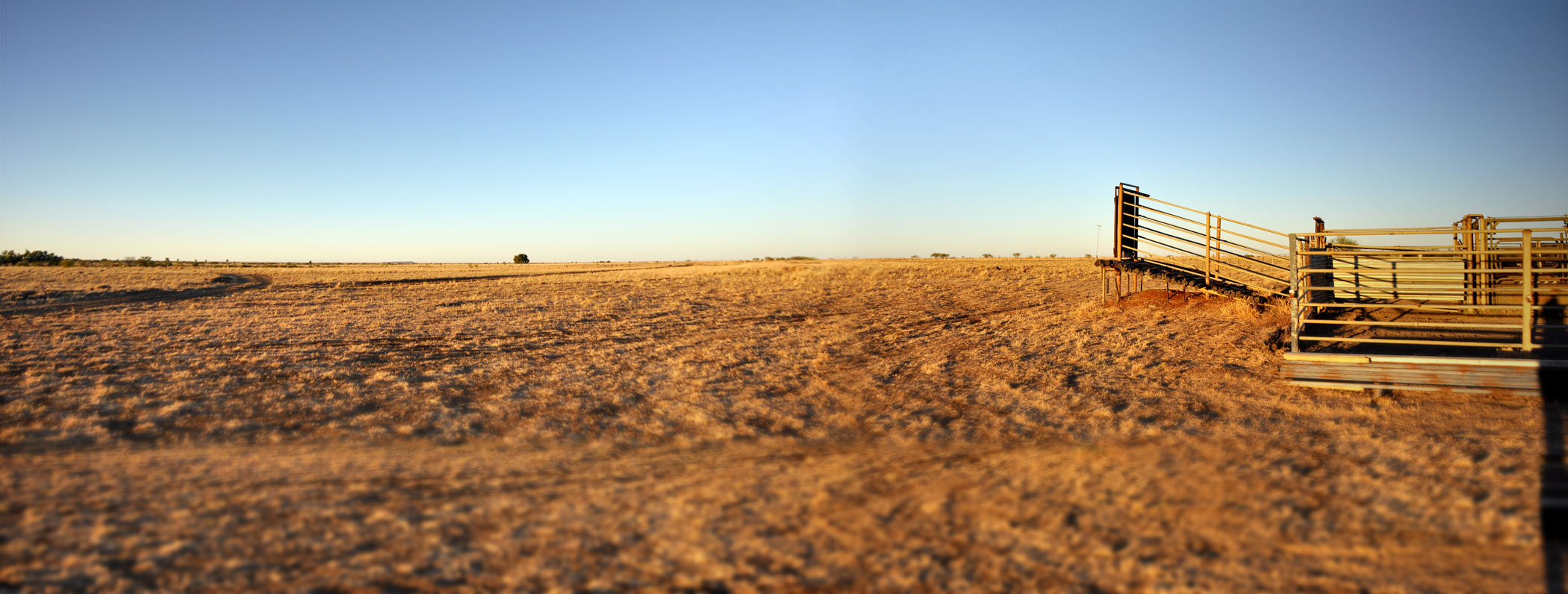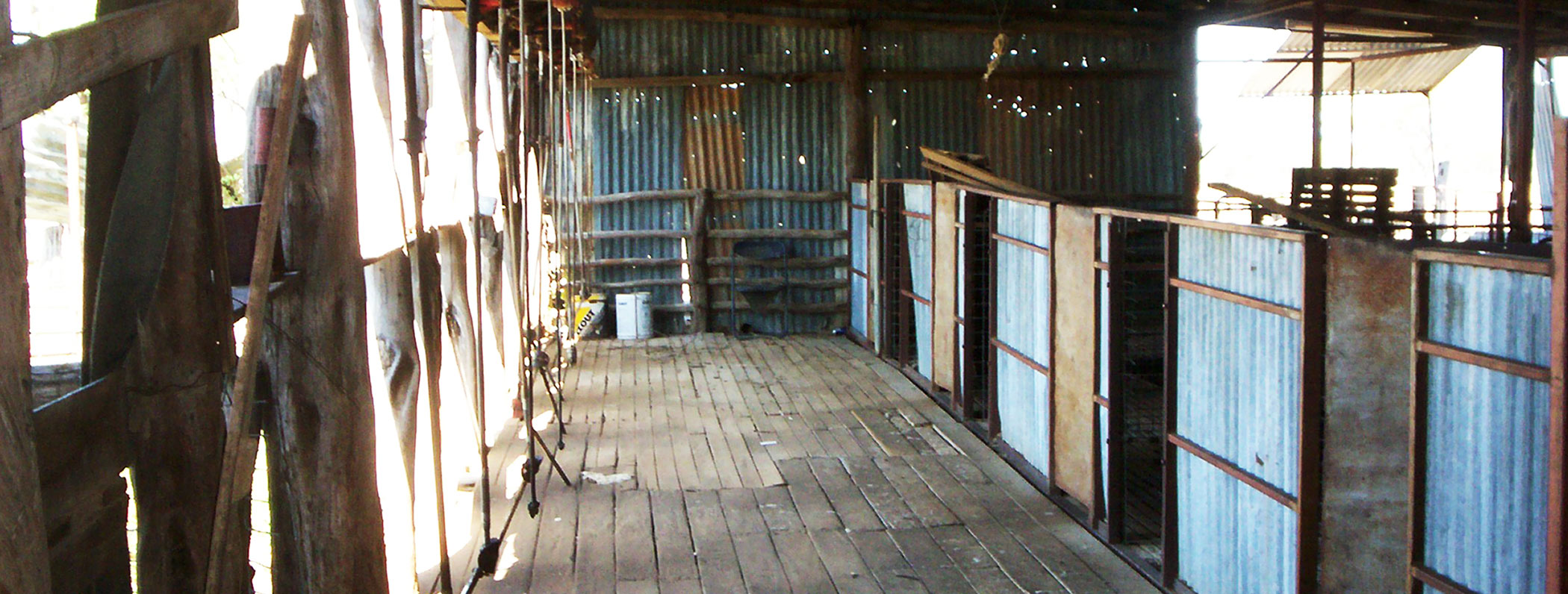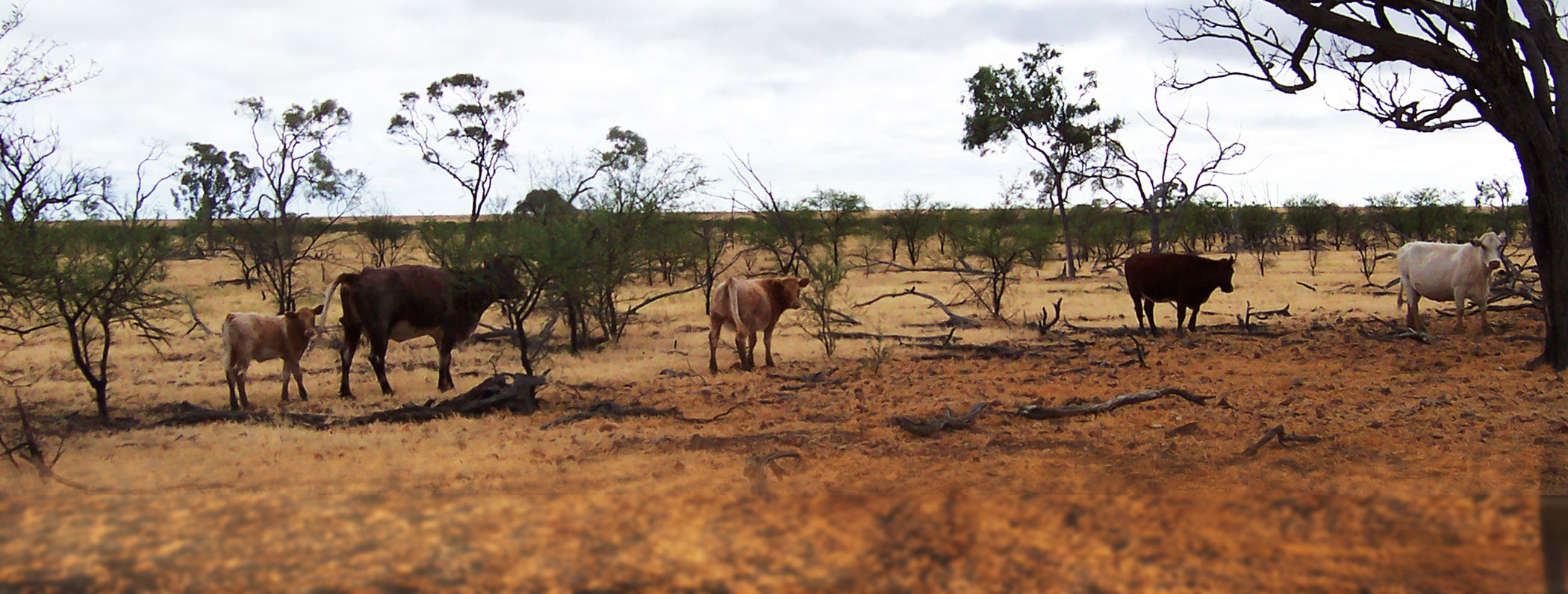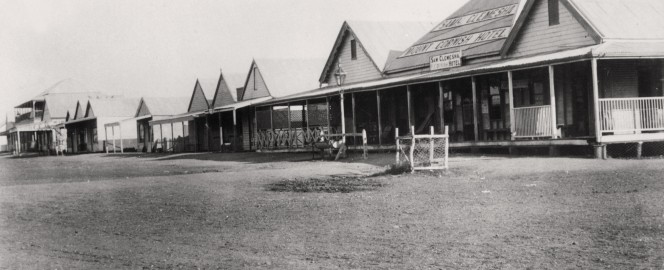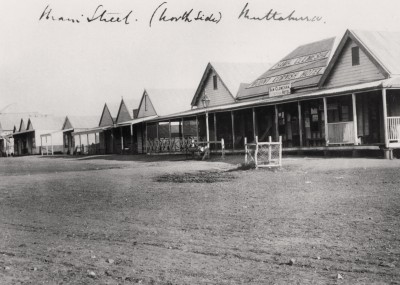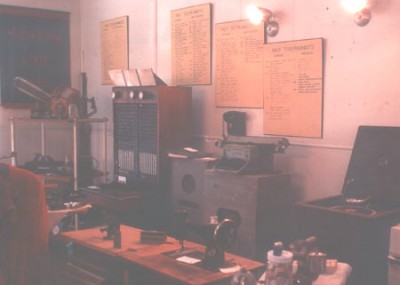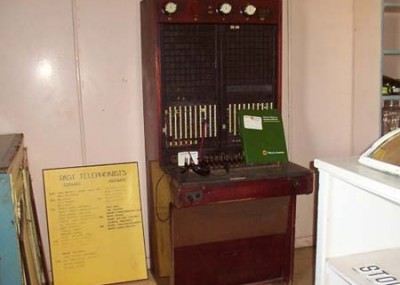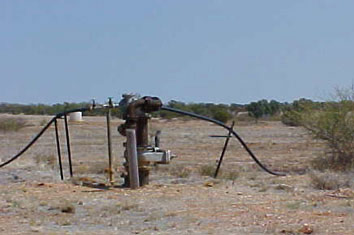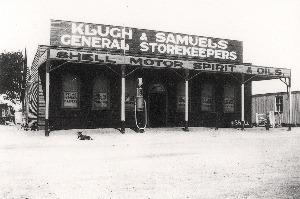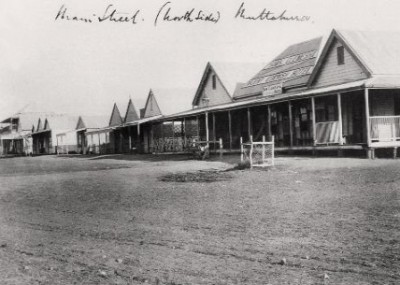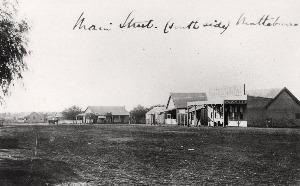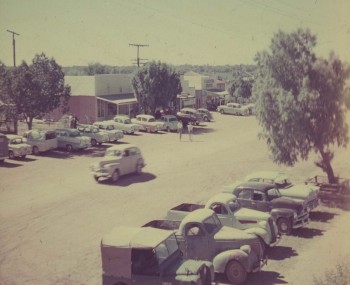Development of Muttaburra
Situated in the central-western region of Queensland, the Aramac Shire comprises 23232 square kilometres. In the 1850s, Robert Ramsay Mackenzie (who became Premier of Queensland and received a knighthood), explored the area for his pastoral interests. He carved “R. R. Mac” on a tree, which was found by the explorer William Landsborough in 1859. This explains how Aramac got its name. On the other hand, Muttaburra was named after the aboriginal tribe Mootaburra; an aboriginal word meaning “the meeting of waters”.
The first residents of the central western region were the five aboriginal tribes, Iningas [central and south-west regions], Jirandali [north region]. Jagalingu [south-east], Niau [north-east] Ilba [north-east extreme] and Mootoburra [south]. Aborigines lived off the land, grinding seeds into flour and baking it into dampers for food along with a collection of berries. They had an intimate knowledge of all the plants useful to them as food and medicine. Their main meat was kangaroo, wallaby and emu, that they either stalked or speared. Most weapons were made from gidgee as it is a very hard wood. They lived in groups the size of which depended on the season or the support the land gave them.
Landsborough realised the potential of this country as prime grazing land and made it his when he went into partnership with a Sydney lawyer; bought out in 1861 by the Scottish Australian Company. One of the first jobs was to find a route to the Port of Bowen so they could bring in their supplies by dray. Nat Buchanan mapped the route, discovering and naming the salt Lake Buchanan, in his travels.
Early Aramac Settlement
When the settlers came to the Aramac district in 1862, the social, religious and economic lifestyle of the aborigines was greatly disrupted. Many aborigines died of tobacco, alcohol and European diseases, like colds. The stations were set up at permanent waterholes and this was usually an important campsite for local aborigines too.
Buchanan brought 5,000 head of cattle into the area along Aramac Creek, and was the first to shear sheep on Bowen Downs in February 1864, cutting 140 bales of wool. During the 1860s along the Thomson River where the Bowen Downs cattle thrived, Harry Redford collected 1,000 of these cattle and began his famous drive to Adelaide.
Establishing Muttaburra
The Land Commissioner has been round this way lately, and surveyed the new township, one and a half mile from Mount Cornish; its name I do not know, and I don’t think anybody else does, as it is undecided. I hear there is a store open now, also a public house, and I suppose there will be other business places shortly. Six thousand fat sheep, the property of Mr. W. S. Paul, started in July for Rockhampton, and must be near their destination by this; they are a fine lot, and if the road is not too dry, we should hear of a good return.
Cite: http://nla.gov.au/nla.news-article1367057 – The Brisbane Courier – Wednesday 10 October 1877 – Page 5 of 6
The township of Muttaburra was proclaimed with 50 allotments available to the public. Here is a list of Crown Lands offered for sale by PUBLIC AUCTION at Aramac on the 18th day of June 1878.
RESERVE FOR A TOWNSHIP, UNDER THE NAME OF MUTTABURRA, ON THE THOMSON RIVER, MITCHELL DISTRICT.
Resumed from the Betawong and Betawong Upper Runs.
Area-2,560 acres.
Commencing on the most western branch of the Thomson River about forty chains above the site of the proposed bridge, at a tree near the junction of a small creek marked broad-arrow over TR ; and bounded thence on the north by a west line one mile fifty-one chains ; thence on the west by a south line two miles ; thence on the south by an east line about two miles to the western branch of the Thomson River above-mentioned at a point forty-five chains below a tree marked broad-arrow over SE over III ; and thence on the east by the right bank of the said western branch upwards to the point of commencement.
Given under my Hand and Seal, at Toowoomba, this second day of February, in the year of our Lord one thousand eight hundred and seventy-eight, and in the forty-first year of Her Majesty’s reign.
By Command,
GEORGE THORN. GOD SAVE THE QUEEN I
Government Gazette – February 1878
Town of Muttaburra
Town, allotment 1, section 1, £10, £2 deposit – William St John Harding
Town, allotment 2, section 1, £10, £2 deposit – James Thompson Tilbury
Town, allotment 3, section 1, £10, £2 deposit – William Richards
Town, allotment 4, section 1, £10, £2 deposit – Thomas Harrison
Town, allotment 5, section 1, £10, £2 deposit – Thomas Harrison
Town, allotment 6, section 1, £10, £2 deposit – James Sorohan (spelling?)
Town, allotment 7, section 1, £10, £2 deposit – Charles Henry Piesse
Town, allotment 8, section 1, £16, £4 deposit – Catherine Harding
Town, allotment 1, section 2, £53, £11 deposit – William Mills
Town, allotment 2, section 2, £32, £7 deposit – Thomas Harrison
Town, allotment 3, section 2, £30, £6 deposit – Peter McGlynn
Town, allotment 4, section 2, £21, £5 deposit – Walter Ramsay
Town, allotment 5, section 2, £26, £5 4s deposit – Harry Herbert Thompson
Town, allotment 6, section 2, £10, £2 deposit – Walter Ramsay
Town, allotment 7, section 2, £10, £2 deposit – James Sorohan (spelling?)
Town, allotment 8, section 2, £10, £2 deposit – Louis Torlotting
Town, allotment 9, section 2, £10, £2 deposit – Maximillian Charles Muller
Town, allotment 10, section 2, £16, £5 deposit – William Mills
Town, allotment 1, section 4, £50, £10 deposit – Qld National Bank (Limited)
Town, allotment 2, section 4, £41, £8 4s deposit – Harry Herbert Thompson
Town, allotment 3, section 4, £26, £5 4s deposit – Edward Schneider
Town, allotment 4, section 4, £16, £4 deposit – Gustav Charles Muller
… (incomplete)[Courtesy Courtney Pedersen Brisbane AUSTRALIA]
‘At the land Sale at the Aramac Court house, on the 18th of June, Mr Sword, Land Commissioner, disposed of forty six town allotments situated at Muttaburra. They were one acre divisions, upset price £10. Twenty three fetched the upset price, the remainder sold at a considerable advance, two of the lots realising £50. One suburban lot was sold out of three, extent 69 acres 3 roods , price, £139 10s (the upset pence).'[The Brisbane Courier: Monday 15 July 1878]
The establishment of stock routes stimulated Muttaburra’s early growth. The main street, Bruford Street was named after the engineer who built the first bridge across the Thomson River just east of the town site. The teamsters who met the needs of the settlers used common grounds near the permanent water of Muttaburra and a saddler, baker, butcher and others made Muttaburra their home.
Klugh and Samuels established a large store in Muttaburra in 1881 whereas 1882 saw the establishment of the Cobb & Co transport company in Muttaburra running a bi-weekly mail route from Bogantungan. By 1887, Muttaburra had two stores, five hotels, a branch of the Queensland National Bank, a lock-up (jail), a bootmaker, tobacconist, telegraph operator, hospital surgeon and a school teacher. The town reached its peak in about the 1890s when it boasted seven hotels. The last and only still remaining hotel; The Exchange; was built by T. J. McCarthy on 1 November 1899 after he had called tenders earlier in the year..
During the 1890s, about 50-60 carriers were carting supplies from the coast to Muttaburra at a cost of 18 pounds a ton with the round trip taking about 3 months. The first school house was finished on 12 November, 1883; officially opened as the Muttaburra State School to the 47 children of the town.
In the first 100 years 1,406 children have been enrolled in this school. The great shearers’ strike caused an upheaval in the regions as the whole district was under military supervision. In May 1891, there was a strike camp at the Union Hole three kilometres out of Muttaburra. There were attempts to burn down sheds as about 400 armed strikers camped in and around Muttaburra.
Like all inland towns, water was a problem and a bore was put down on 30 November, 1900. The depth is 825.1 metres, with an original flow of 4,455,000 litres (990,000 gallons). This bore was reconditioned in 1950 and now has a flow of only 990,000 litres (220,000 gallons) a day.
Muttaburra’s first all night telephone service opened in 1920 with the Shire Council guaranteeing to cover the loss that incurred with this exchange.
The reforming of the Muttaburra District Progress Association in 1948 helped advance Muttaburra greatly and was responsible directly or indirectly for the park and pool, aerodrome, permanent stationing of the shire plant in Muttaburra along with a vast improvement in the district roads. In the late 1940s, the Muttaburra Voluntary Fire Brigade was formed.
The 1950s was a boom period for the town. 1951 saw the opening of Jubilee Memorial Park by the Hon G. D. Devries MLA; the new hospital opened in 1957; the Masonic Lodge was built in 1959 and the Ruby Bayliss QCWA Hostel opened in 1955 to provide accommodation for out-of-town expectant mothers. All these improvements related to a succession of good seasons during the 1950s, and rising markets around the world with wool reaching £1 for a pound.
Adapted from material by Louise Moloney
